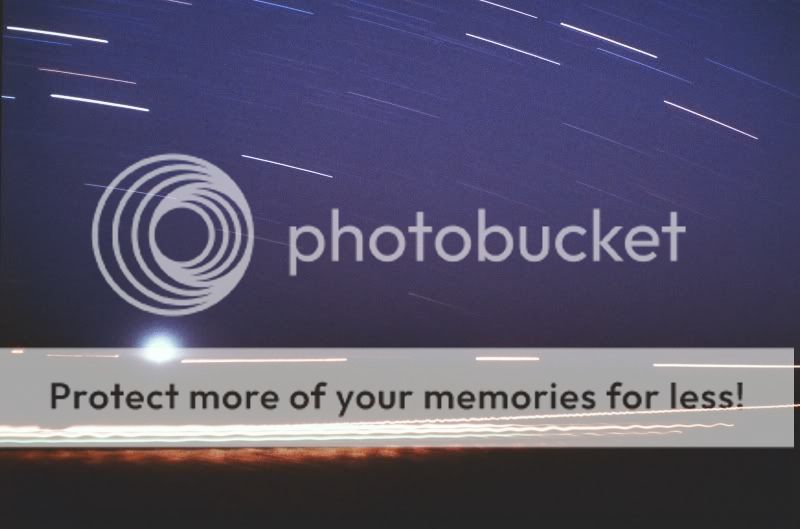- Messages
- 11,513
- Name
- Stewart
- Edit My Images
- Yes
Not sure this is really a landscape. But it is a view or vista, so I guess this is probably the best place for it?
Anyway, a few weeks ago when we were promised a meteor shower (the Perseids), I spent several hours in a surprisingly cold field outside town in order to watch and (try to) photograph them. It was my first attempt at this, and I learned an awful lot about the practicalities of such photography, mostly by getting things wrong.
Amazingly, despite my general incompetence, I managed to get a decent picture. Here it is. Note the single solitary meteor in the lower right corner!

Technical stuff: This is a composite image compiled from 28 separate exposures taken between 23:00 and midnight. The exposures were mostly about 2 minutes each (except when I forgot to set the timer! :bonk and the total exposure time was 61 minutes 17 seconds.
and the total exposure time was 61 minutes 17 seconds.
All images taken with a 350D and EF-S 10-22mm lens set at 10mm; ISO 100; f/8. I think maybe I should have used a wider aperture and/or a higher ISO, but before this sequence I did a test exposure for 10 minutes at the same setting and there was definite sky fogging. (I was a few miles out of town, but the sky is never really dark in the south east of the UK.) Maybe I could have increased the exposure by a stop or so for each frame, but not much more.
Incidentally I saw 40 meteors between 23:00 and 01:30 when I packed up, of which about 8 were of the "wow!" variety. Despite having a 10mm wide angle, I estimate that only about 6 of these 40 would have been in the frame, which seems a little unlucky to me. Unfortunately the part of the sky I was photographing clouded over a bit between about midnight and 00:15, and then my lens starting fogging up with dew - but of course I didn't realise that until I came to pack up! Ideally I would have had something like a 2½ hour exposure from about 75 frames. Next time I will.
Comments and critique (on either the picture or my technique) very welcome.
Anyway, a few weeks ago when we were promised a meteor shower (the Perseids), I spent several hours in a surprisingly cold field outside town in order to watch and (try to) photograph them. It was my first attempt at this, and I learned an awful lot about the practicalities of such photography, mostly by getting things wrong.
Amazingly, despite my general incompetence, I managed to get a decent picture. Here it is. Note the single solitary meteor in the lower right corner!

Technical stuff: This is a composite image compiled from 28 separate exposures taken between 23:00 and midnight. The exposures were mostly about 2 minutes each (except when I forgot to set the timer! :bonk
All images taken with a 350D and EF-S 10-22mm lens set at 10mm; ISO 100; f/8. I think maybe I should have used a wider aperture and/or a higher ISO, but before this sequence I did a test exposure for 10 minutes at the same setting and there was definite sky fogging. (I was a few miles out of town, but the sky is never really dark in the south east of the UK.) Maybe I could have increased the exposure by a stop or so for each frame, but not much more.
Incidentally I saw 40 meteors between 23:00 and 01:30 when I packed up, of which about 8 were of the "wow!" variety. Despite having a 10mm wide angle, I estimate that only about 6 of these 40 would have been in the frame, which seems a little unlucky to me. Unfortunately the part of the sky I was photographing clouded over a bit between about midnight and 00:15, and then my lens starting fogging up with dew - but of course I didn't realise that until I came to pack up! Ideally I would have had something like a 2½ hour exposure from about 75 frames. Next time I will.
Comments and critique (on either the picture or my technique) very welcome.

 Great shot.
Great shot.

